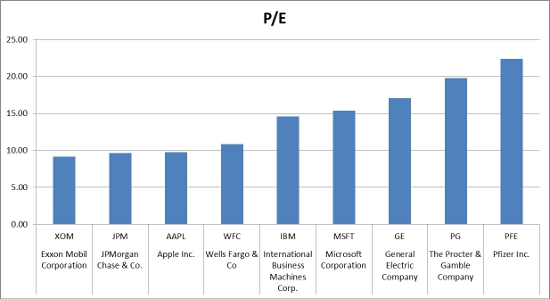The largest tax payers in the US
I recently came across this list on Forbes on the largest 25 tax payers. Forbes does a bit of analysis on each of them. It is probably worth your time to jump over, but I thought I would give the highlights here:
|
Rank of tax expense |
Company |
Symbol |
Effective Tax Rate |
| 1 | ExxonMobil | XOM | 39% |
| 2 | Chevron Corporation | CVX | 43% |
| 3 | Apple Inc. | AAPL | 25% |
| 4 | Wells Fargo & Co. | WFC | 31.2% |
| 5 | JP Morgan Chase & Co. | JPM | 26% |
| 6 | Wal-Mart Stores | WMT | 31% |
| 7 | ConocoPhillips | COP | 51.5% |
| 8 | Berkshire Hathaway Inc. | BRK | 28% |
| 9 | IBM | IBM | 24% |
| 10 | Microsoft Corporation | MSFT | 22.8% |
| 11 | Philip Morris International Inc. | PM | 29.5% |
| 12 | Goldman Sachs | GS | 33% |
| 14 | Comcast Corporation | CMCS | 32% |
| 14 | The Procter & Gamble Co. | PG | 23.5% |
| 15 | Johnson & Johnson | JNJ | 23.7% |
| 16 | Intel Corporation | INTC | 23.6% |
| 17 | Occidental Petroleum Corp. | OXY | 42% |
| 18 | UnitedHealth Group | UHG | 35.9% |
| 19 | The Walt Disney Company | DIS | 32.7% |
| 20 | AT&T | T | 27.8% |
| 21 | Oracle | ORCL | 21.4% |
| 22 | The Coca-Cola Company | KO | 23.1% |
| 23 | The Home Depot Inc. | HD | 37.2% |
| 24 | McDonald’s | MCD | 32.4% |
| 25 | GOOG | 19.4% |


